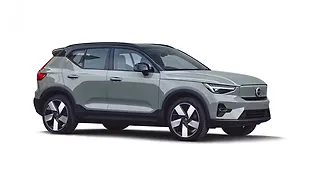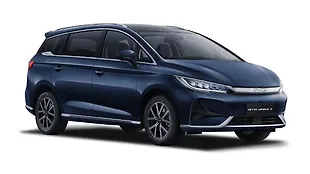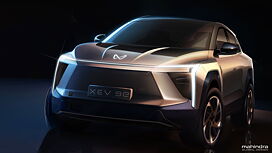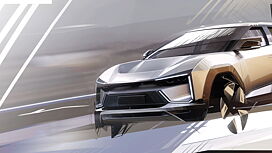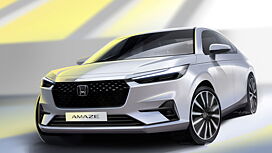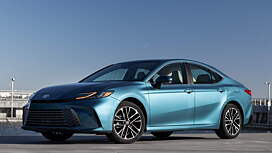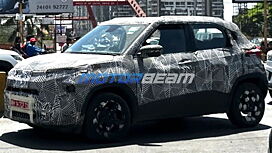Why would I buy it?
- Updated feature list
- All the benefits of manual but without the effort of operating a clutch
- Wide powertrain list
Why would I avoid it?
- Beige upholstery easily prone to stains
- Top-spec iMT is pricey
- No ventilated seats
Engine and performance
This version of the car we drove is powered by Hyundai 1.0-litre turbo-petrol engine that produces 118bhp/172Nm and can also be had with a seven-speed iMT. As the name suggests, you get all the benefits of a manual gearbox but without the extra effort of the traditional three-pedal setup. Even better, you get the additional control a manual offers over an automated manual transmission but without the slow shift times and signature head-nod of the AMT.

As a gearbox, the iMT/clutchless manual feels light and easy to use with slick shifts and easy availability of torque low down in the rev range. Where this gearbox shines is in its ability to make your driving effort easier but without losing any of the involvement or control that a manual gearbox offers.

In city driving conditions, all you have to do is slot it in first and ease off the brake, and the car will start to roll on its own. As we said in our first-drive review of the iMT last year, you don’t even need to press the brake to move from first gear, but given the levels of discipline on our roads, it’s better to have a foot hovering over the brake pedal. You don’t get hill-hold, but there’s hill start assist which holds the car in place briefly on an incline allowing you the required time to switch between the brake and the throttle.

The engine revs freely on the highway, allowing you to quickly get up to highway speeds. Once you have hit sixth gear, you can drive it like a regular automatic and, due to its design, will not stall, leaving you with one less thing to deal with out on the open roads. Finally, the shifts become much smoother if you take your foot off the gas pedal when changing gears.
Ride and handling

On the ride and handling front, the Venue’s steering weighs up nicely but lacks feel, especially in the dead ahead position. At highway speeds, the car offers decent straight-line stability but does tend to skip over undulations and bumps commonly associated with concrete roads like the outer ring road of Hyderabad that we had our test drive on. As a car to use in city conditions, the Venue shines with a tight turning circle, easy-to-judge edges and light steering.

The low-speed ride is effective in absorbing most bumps and imperfections without displacing the occupants in the cabin, and this, combined with the high ground clearance, your progress will rarely be halted for lack of good roads.
Comfort, convenience and features

Where Hyundai has spent a large chunk of its upgrade budget is the cabin and feature list of the Venue. The all-black cabin has been replaced by a greige and black cabin which looks nice but is a colour scheme that will quickly pick up dust and stains. The automaker, under its Mobis programme, does offer a variety of coloured seat covers for the Venue.

Up front, you get a new steering wheel and digital instrument cluster as a part of the update. The D-cut steering wheel, as Hyundai calls it, has been taken from the Creta while the cluster is shared with the i20. Both are welcome additions and help a lot in uplifting the overall appearance of the cabin. Hyundai has also added a first-in-segment power function for the driver’s seat, which is fancy in terms of checking off tick boxes but looks like it has come at the cost of ventilated front seats that its sister car, the Kia Sonet, already offers.

In a bid to liberate more space in the back, Hyundai has scooped out the seat back of the front seats, added a two-step recline for the left side seat and scooped out the roof above the rear section. These, combined with the two-tone colour scheme and sunroof, give the impression of more space at the back, but that’s something we can only tell you when we get our hands on the car for a longer period.

On the feature front, in addition to everything already available on the SX (O) trim, you get an in-built air purifier, power driver’s seat, wireless charger and even sounds of nature on the infotainment system. My favourite is the coffee shop, which isn’t natural at all but does certainly give you that vibe. Hyundai has also put its weight behind Bluelink connected car technology and added over 60 features as well home to car technology that lets you control some of the car functions via an Alexa or Google Home. On the safety front, this top-spec model gets six airbags, ABS, EBD, ESC, vehicle stability management, hill assist, a reverse camera with dynamic guidelines and a tyre pressure monitoring system.
Exterior design

Up front, Hyundai has fitted this updated Venue with a new chrome grille in line with the rest of its SUV range globally. While giving the face a shiny look, it has also made it look wider. In addition, the front also gets a new design for the LED eyebrows.

On the side, Hyundai has updated the design for the alloy wheels moving from a swirl pattern to a 16-inch multi-spoke star design which is only available for this top-spec SX (O) version. At the rear, the Venue gets a new design for the tail lamp, which is quite prominent. It runs the width of the boot lid and, combined with a heavy dose of black elements all around, gives the Venue a futuristic appearance.
Conclusion and rivals

Since its launch in 2019, Hyundai has never had trouble selling the Venue. This comprehensive mid-life update for the compact SUV then is a guarantee that it will not run out of steam till the end of its life cycle. It might not be the most dynamic car to drive among its rivals, but it gets the job done and has a wide appeal thanks to its diverse powertrain lineup and massive feature list.

The Hyundai Venue is a rival for the likes of the Kia Sonet, Maruti Brezza, Toyota Urban Cruiser, Mahindra XUV300, Renault Kiger, Nissan Magnite, Honda WR-V, Tata Nexon and Mahindra Bolero Neo.
Photography: Kapil Angane

![हुंडई वेन्यू [2022-2023] ठीक सामने तीन चौथाई हुंडई वेन्यू [2022-2023] ठीक सामने तीन चौथाई](https://imgd.aeplcdn.com/642x361/n/cw/ec/124661/hyundai-venue-right-front-three-quarter67.jpeg?isig=0&wm=1&q=80)
![हुंडई वेन्यू [2022-2023] ठीक सामने तीन चौथाई हुंडई वेन्यू [2022-2023] ठीक सामने तीन चौथाई](https://imgd.aeplcdn.com/642x361/n/cw/ec/124661/hyundai-venue-right-front-three-quarter0.jpeg?isig=0&wm=1&q=80)
![हुंडई वेन्यू [2022-2023] राइट साइड का दृश्य हुंडई वेन्यू [2022-2023] राइट साइड का दृश्य](https://imgd.aeplcdn.com/642x361/n/cw/ec/124661/hyundai-venue-right-side-view12.jpeg?isig=0&wm=1&q=80)
![हुंडई वेन्यू [2022-2023] राइट साइड का दृश्य हुंडई वेन्यू [2022-2023] राइट साइड का दृश्य](https://imgd.aeplcdn.com/642x361/n/cw/ec/124661/hyundai-venue-right-side-view65.jpeg?isig=0&wm=1&q=80)
![हुंडई वेन्यू [2022-2023] राइट साइड का दृश्य हुंडई वेन्यू [2022-2023] राइट साइड का दृश्य](https://imgd.aeplcdn.com/642x361/n/cw/ec/124661/hyundai-venue-right-side-view64.jpeg?isig=0&wm=1&q=80)
![हुंडई वेन्यू [2022-2023] राइट साइड का दृश्य हुंडई वेन्यू [2022-2023] राइट साइड का दृश्य](https://imgd.aeplcdn.com/642x361/n/cw/ec/124661/hyundai-venue-right-side-view63.jpeg?isig=0&wm=1&q=80)
![हुंडई वेन्यू [2022-2023] राइट साइड का दृश्य हुंडई वेन्यू [2022-2023] राइट साइड का दृश्य](https://imgd.aeplcdn.com/642x361/n/cw/ec/124661/hyundai-venue-right-side-view1.jpeg?isig=0&wm=1&q=80)
![हुंडई वेन्यू [2022-2023] राइट साइड का दृश्य हुंडई वेन्यू [2022-2023] राइट साइड का दृश्य](https://imgd.aeplcdn.com/642x361/n/cw/ec/124661/hyundai-venue-right-side-view3.jpeg?isig=0&wm=1&q=80)
![हुंडई वेन्यू [2022-2023] इमेज हुंडई वेन्यू [2022-2023] इमेज](https://imgd.aeplcdn.com/272x153/n/cw/ec/106257/venue-exterior-right-front-three-quarter-2.jpeg?isig=0&q=80)











